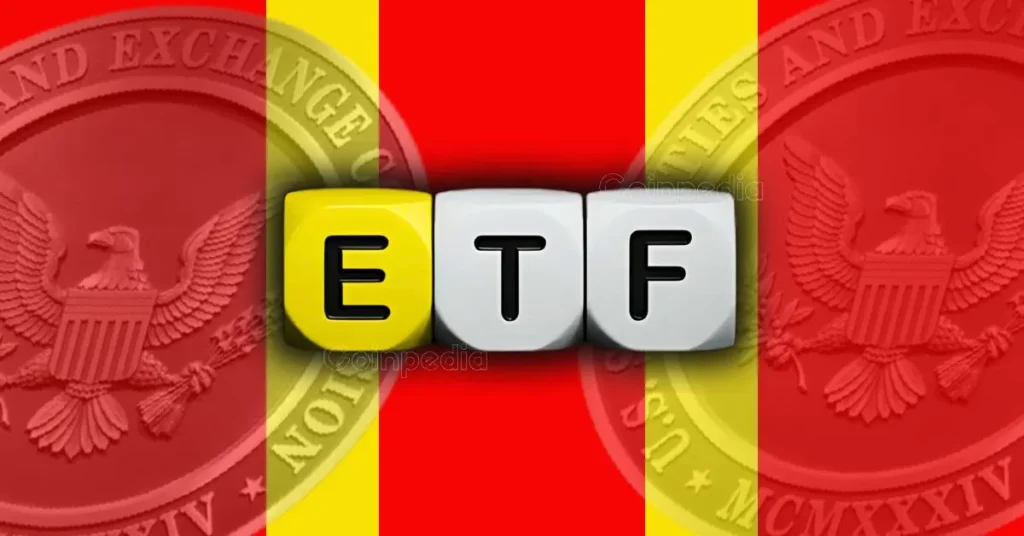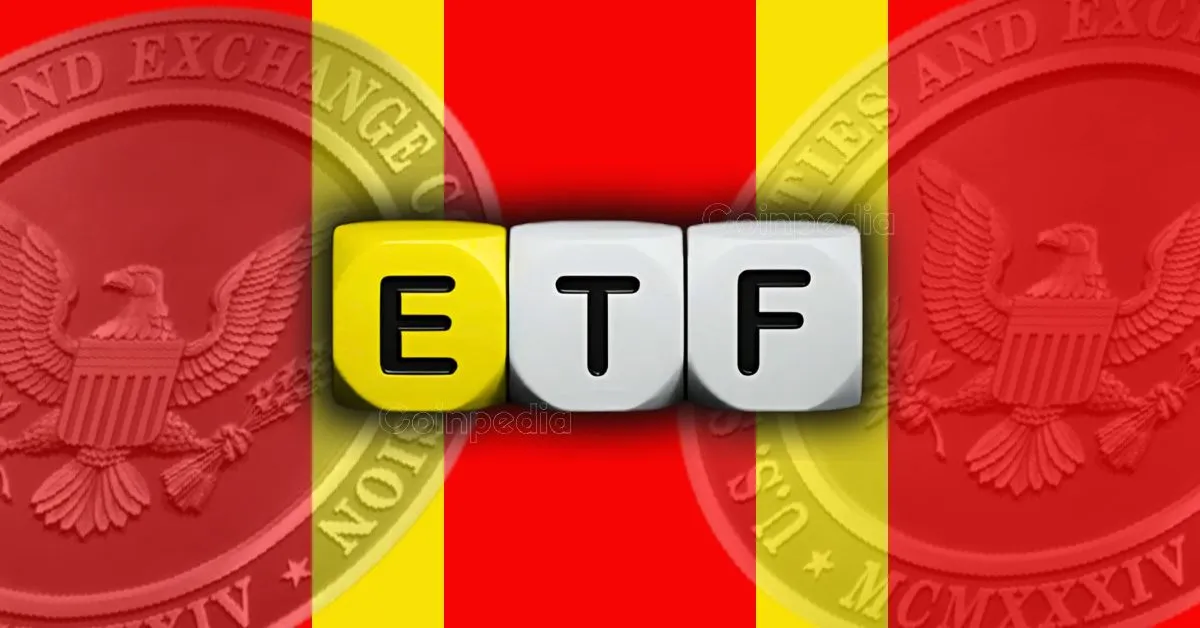
The SEC’s Next Move in Crypto ETFs: A Comprehensive Analysis
Introduction
The cryptocurrency market has witnessed significant milestones in recent years, with the approval of Bitcoin ETFs being a notable turning point. This development has paved the way for broader institutional and retail participation, signaling a shift in regulatory attitudes toward digital assets. As the dust settles on Bitcoin ETFs, the focus now shifts to the next potential regulatory move by the U.S. Securities and Exchange Commission (SEC). Nate Geraci, President of ETF Store, has hinted that the SEC might next consider staking in Ethereum ETFs. This report explores the implications of such a decision, examining the factors at play, the potential impact on the crypto market, and the challenges the SEC might face.
The Staking Proposition: A Game Changer
Staking, in the context of cryptocurrencies like Ethereum, involves participating in the network’s operation by holding and “staking” a certain amount of the cryptocurrency. This process helps secure the network, and in return, stakers receive rewards, similar to earning interest on a deposit. The idea of incorporating staking into an Ethereum ETF is intriguing and could significantly enhance the attractiveness of these investment vehicles.
Enhanced Returns and Institutional Appeal
One of the most compelling aspects of staking in Ethereum ETFs is the potential for enhanced returns. Staking rewards would provide an additional income stream for ETF holders, making Ethereum ETFs more attractive compared to simply holding the cryptocurrency. This added yield could be particularly appealing to institutional investors, who are often drawn to yield-generating assets. By offering staking rewards, Ethereum ETFs could unlock significant capital inflows from institutional investors, further legitimizing cryptocurrencies as a mainstream asset class.
Network Security and Competitive Edge
Beyond the financial incentives, staking in Ethereum ETFs would also contribute to the overall security and stability of the Ethereum network. By participating in staking, these ETFs would help secure the network, which is crucial for the long-term success of the Ethereum ecosystem. Additionally, ETFs that offer staking rewards would likely attract more investors compared to those that don’t, creating a competitive advantage in the market. This could lead to a race among ETF providers to offer the most attractive staking rewards and the lowest fees, ultimately benefiting investors.
Navigating the Regulatory Maze
While the prospect of staking in Ethereum ETFs is exciting, the SEC faces numerous challenges in evaluating and approving such products. The regulatory landscape for cryptocurrencies is complex and evolving, and the SEC must carefully consider several factors before making a decision.
Defining Staking as a Security
A key concern is whether staking activities should be classified as securities offerings. If so, they would be subject to stringent regulatory requirements. The SEC has been grappling with this issue in various enforcement actions against crypto platforms offering staking services. The classification of staking as a security could have significant implications for the structure and operation of Ethereum ETFs, as well as the broader crypto market.
Custody and Security
Ensuring the safe custody and security of staked Ethereum is paramount. The SEC would need to be satisfied that ETF providers have robust measures in place to prevent theft or loss of assets. This includes the security of private keys and protection against slashing, a penalty imposed on validators for misbehavior on the Ethereum network. The SEC would likely require ETF providers to demonstrate their ability to manage these risks effectively before approving staking in Ethereum ETFs.
Disclosure Requirements
Clear and comprehensive disclosure requirements are essential to inform investors about the risks and rewards associated with staking. This includes detailing the staking methodology, potential risks like slashing, and the impact of staking on ETF performance. The SEC would need to ensure that ETF providers provide adequate disclosure to investors, allowing them to make informed decisions about whether to invest in these products.
Operational Complexities
Staking involves operational complexities, such as managing validator nodes, handling staking rewards, and dealing with unstaking periods. The SEC needs to assess the operational capabilities of ETF providers to ensure they can effectively manage these complexities. This includes evaluating the technology and infrastructure used by ETF providers, as well as their experience in managing staking activities.
Tax Implications
The tax implications of staking rewards are still evolving. The SEC needs to consider how staking income will be treated for tax purposes and ensure that ETF providers provide adequate guidance to investors. This is particularly important given the complexity of tax laws and the potential for confusion among investors regarding the tax treatment of staking rewards.
The XRP Factor: Why Ethereum Might Get the Nod First
While many in the crypto community are eagerly awaiting an XRP ETF, Geraci’s hint suggests that Ethereum staking ETFs might be approved first. There are several reasons for this:
Clarity on Ethereum’s Status
Unlike XRP, which has been subject to a long-running legal battle with the SEC over its classification as a security, Ethereum’s status is relatively clearer. The SEC has, in the past, indicated that it does not consider Ethereum a security, although this stance could evolve. This clarity on Ethereum’s status could make it easier for the SEC to approve staking in Ethereum ETFs, as it would not have to grapple with the same legal and regulatory uncertainties that surround XRP.
Technological Maturity
Ethereum’s transition to a proof-of-stake consensus mechanism has made staking an integral part of the network. This established staking infrastructure makes it easier to integrate staking into ETF products. In contrast, XRP’s consensus mechanism is different, and its staking infrastructure is not as well-established, which could make it more challenging to integrate staking into an XRP ETF.
Market Demand
There is significant demand for Ethereum ETFs, particularly those that offer staking rewards. The SEC might be more inclined to approve products that meet this demand, provided the regulatory concerns are addressed. In contrast, the demand for an XRP ETF is not as clear, and the SEC might be more cautious about approving such a product given the legal and regulatory uncertainties surrounding XRP.
Potential Market Impact: A Ripple Effect
The approval of staking in Ethereum ETFs would have a profound impact on the crypto market. It would further legitimize cryptocurrencies as an asset class, attracting more institutional and retail investors. Increased demand for Ethereum would likely drive up its price, benefiting both ETF holders and the broader Ethereum ecosystem.
Increased Adoption and Innovation
The approval of staking in Ethereum ETFs could also encourage the development of more innovative crypto ETF products. We might see ETFs that incorporate other yield-generating activities, such as lending or providing liquidity to decentralized exchanges (DEXs). We might also see ETFs that track baskets of cryptocurrencies, offering investors diversified exposure to the crypto market.
Regulatory Clarity and Competition
The approval of staking in Ethereum ETFs would provide greater regulatory clarity for the crypto industry, paving the way for further innovation and investment. It would also foster competition among ETF providers, as they compete to offer the most attractive staking rewards and the lowest fees. This competition would ultimately benefit investors, as they would have more options to choose from and could potentially earn higher returns.
Beyond Ethereum: The Future of Crypto ETFs
The approval of staking in Ethereum ETFs could be a stepping stone towards even more sophisticated crypto ETF products. As the market evolves, we might see ETFs that incorporate other yield-generating activities, such as lending or providing liquidity to decentralized exchanges (DEXs). We might also see ETFs that track baskets of cryptocurrencies, offering investors diversified exposure to the crypto market.
Balancing Innovation and Protection
The key is for the SEC to strike a balance between fostering innovation and protecting investors. This requires a clear and consistent regulatory framework that provides certainty for market participants while also mitigating the risks associated with crypto assets. The SEC’s approach to staking in Ethereum ETFs will set an important precedent for the broader crypto ETF market and could shape the future of digital asset investment.
Conclusion: The Tipping Point
Nate Geraci’s hint underscores the dynamic nature of the crypto ETF landscape and the SEC’s evolving stance on these products. While challenges remain, the potential benefits of staking in Ethereum ETFs are undeniable. The SEC’s decision will not only shape the future of Ethereum ETFs but also set a precedent for the broader crypto ETF market. It’s a decision that could unlock significant capital inflows, foster innovation, and further legitimize cryptocurrencies as a mainstream asset class. The crypto community, and indeed the financial world, will be watching closely as the SEC considers this pivotal step. The approval of staking in Ethereum ETFs could mark a tipping point for the crypto market, paving the way for a new era of digital asset investment.





